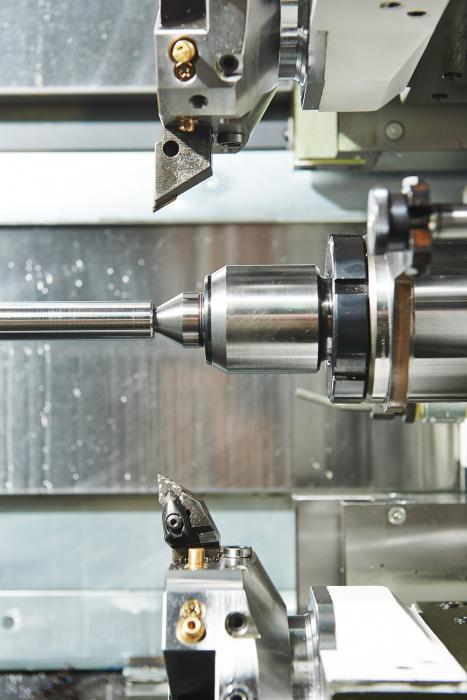Formulating of CNC turning machining process

In the machining of parts on CNC lathes, the process should be divided according to the principle of process concentration, and most or even all surfaces should be processed as much as possible under one clamping. Depending on the shape of the structure, the outer circle, the end face or the inner hole, and the end face are usually selected, and the design reference, the process reference, and the programming origin are unified. In mass production, the following methods are commonly used to divide the process.
1 According to the part processing surface division process
That is, the part of the process of completing the same profile is a process, and the parts with many complicated surfaces can be divided into multiple processes according to their structural features (such as inner shape, shape, surface and plane).
The surface with higher positional accuracy is completed under one clamping, so as to avoid the error caused by multiple positioning clamping affecting the positional accuracy.
2 According to the rough, fine processing division process
That is, the part of the process completed in the roughing process is a process, and the part of the process completed in the finishing process is a process. For parts with large blanks and high machining accuracy, the roughing and finishing vehicles should be separated into two or more processes. The roughing is arranged on a numerically controlled machine tool with lower precision and higher power, and the finishing is arranged on a numerically controlled machine tool with higher precision.
This method of division is suitable for parts that have large deformation after processing and need to be separated by coarse and fine machining, such as parts in which the blank is a casting, a welded part or a forged part.
3 Divide the process according to the type of tool used
The part of the process completed by the same tool is a process. This method is suitable for the workpiece to be processed more surface, the machine tool has a long working time, and the programming and inspection of the machining program is difficult.
4 According to the number of installations to divide the process
The part of the process completed in one installation is a process. This method is suitable for workpieces with a small amount of workpiece processing, and can be inspected after processing.
After careful and careful analysis of the parts drawing, the following basic principles should be followed in the development of the processing plan: first coarse and then fine, first and then far, internal and external cross, the least program block, the shortest route.
(1) first rough than fine
It refers to the step-by-step improvement of machining accuracy in the order of one of the roughing and one fine. In order to improve production efficiency and ensure the finishing quality of the parts, the roughing process should be arranged during the cutting process, and most of the machining allowance before the finishing is removed in a short period of time, while ensuring the finishing allowance as much as possible. The amount is even.
(2) First near then far
The far and near here is based on the distance of the processing part relative to the tool point. Under normal circumstances, especially in roughing, it is usually arranged to process the part close to the tool point and process it away from the part farther away from the tool point in order to shorten the tool moving distance and reduce the idle travel time.
(3) Internal and external cross
For the parts that need to be machined on both the inner surface (inner cavity) and the outer surface, when the processing sequence is arranged, the inner and outer surfaces should be roughed first, and then the inner and outer surfaces should be finished.
Tool path: In CNC machining, the path and direction of the tool point relative to the workpiece. That is, the path from the start of the tool point to the end of the machining program, including the path of the cutting process and the non-cutting idle stroke of the tool cutting and cutting.
The general principle of determining the route of the cutter: under the premise of ensuring the machining accuracy and surface quality of the parts, the route of the cutter is shortened as much as possible to improve the productivity; the coordinate value calculation is convenient, the programming workload is reduced, and the programming is convenient. For multiple repeated passes, subroutines should be programmed to simplify programming.
Commonly used route for machining parts on CNC lathes:
Analysis of the path of machining arc. When actually machining an arc, it is necessary to process multiple knives, first cutting off most of the margin, and finally driving out the required arc.
Analysis of the path of the grooving. When a rectangular groove with a low turning accuracy and a narrow width is used, a grooving knife having a blade width equal to the groove width can be used for feeding in one time by the straight forward method. The groove with higher precision is generally used for secondary feed turning, that is, when the groove is first fed, the finishing allowance is left on both sides of the groove wall, and the second feeding is trimmed with a uniform knife.
The wide groove can be cut by multiple straight-through methods, and the finishing allowance is left on the groove wall and the bottom surface, and the last one is finished to the size.
